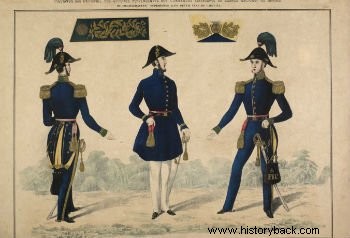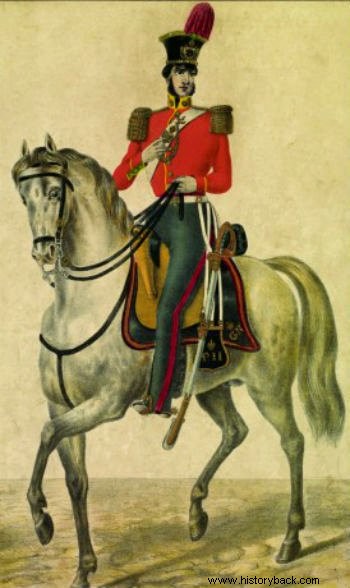The National Guard Brazilian was created in August 1831 during the Regency Period.
The objective was to have an armed group to counterbalance the power of the Army and increase the autonomy of the provinces.
Origin

National Guard Officer Uniforms. Watercolor lithographs. Rio de Janeiro, Imperial Lithograph of Heaton and Rensburg, s.d.
After the abdication of Dom Pedro I, various political groups such as conservatives, liberals and absolutists try to make their ideas prevail within the government of the Trina Regency.
The army, in turn, also had claims to the new government. Fearful that the Portuguese wanted to reconquer Brazil, some officers asked:
- The suspension of Portuguese immigration to Brazil,
- the removal of Portuguese from public office,
- the promulgation of a new constitution,
- and the creation of a new government.
Moving from words to action, the 26th Infantry Battalion of Rio de Janeiro and the city's Police Corps rebel.
The Minister of Justice, Diego Feijó, asks the battalions of Minas Gerais and São Paulo for help. In addition, it distributes weapons to its allies, who formed the Sacred Battalion, with around 3000 soldiers, commanded by the then captain Luís Alves de Lima e Silva (future Duque de Caxias).
Read more about the Regency Period.
Creation of the National Guard

Member of the Cavalry Corps of the National Guard. Watercolor lithographs. Rio de Janeiro, Imperial Lithograph of Heaton and Rensburg, s.d.
Thus it became evident that the government could not entirely trust the army which had its own political ideas.
It was chosen to create an armed force formed by the elite, the National Guard. Its members were all citizens with the right to vote and would thus obtain exemption from service in the Army.
However, they did not receive payment and were responsible for their own uniform. The government was responsible for providing weapons and instruction. The National Guard was subordinated to the Justice of the Peace, then to the Justice of Law, to the provincial president, and finally to the Minister of Justice.
The highest rank a civilian could attain was that of Colonel, and the title was reserved for the great landowners of each region. In this way, the National Guard will generate the phenomenon of “coronelismo” that will mark Brazilian politics so much.
For the Army, the creation of the National Guard was seen as disastrous, as the number of troops was cut by a third in Rio de Janeiro and thus, the Armed Forces diminished in importance.
Despite the military revolts registered in Rio de Janeiro and Pernambuco, the fact is that the officers were afraid of counting on the support of the population in general and, with that, generating a revolt among the slaves. Therefore, they were isolated in the barracks and their demands did not have the support of the common citizen.
End of the National Guard
After the proclamation of the Republic, made mostly by the Brazilian Army, the National Guard lost importance. After all, the Army was against this armed corps since its inception.
It was absorbed by different army battalions and would be extinguished in the Republic, in 1922, by President Artur Bernardes.
See also :Duke of Caxias
